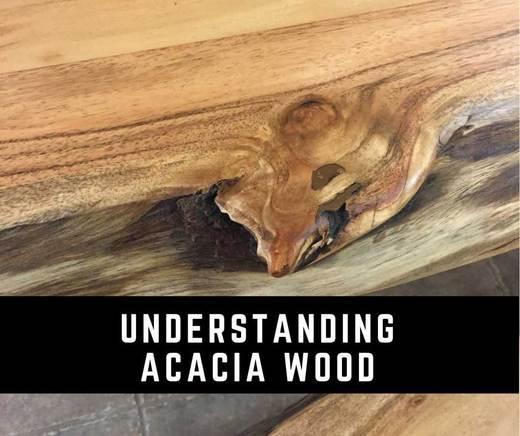
What’s Acacia wood?
Share
In North America, we are familiar with woods native to our own backyard like Maple, Oak, Pine or Birch and they are used to in building materials, hardwood floors, furniture, and so many more. In the recent 30 years through increased globalization, we’ve been introduced to other species of woods from Asia and the Pacific such as teak, rosewood, bamboo and mango woods.
Now there’s a new player in town and you may have heard of it - Acacia wood. So what’s the big deal? Why are we so obsessed with this exotic wood? Read more to find out!
Where does the acacia tree grow?
Although acacia wood is often referred to as “exotic”, it actually grows all over the world from Australia and Asia, to the Pacific Islands, Africa and even the Americas. There are over a thousand different varieties of the tree and they come in all shapes and sizes depending on the environment they grow in. The ones in Australia, for example, have thorns and are often referred to as “thorntree,” “whistling thorn,” or “wattle.”

The majority of acacia wood used to build furniture is cultivated in India where they’ve been using it for hundreds of years to build houses, tools and furniture. The wood is very hard, durable and it’s considered one of the fastest growing trees in the world - making it a more sustainable source of wood for building furniture.
Using acacia for furniture
Building furniture with solid acacia wood makes for a high quality end product. Acacia is similar to teak in many ways, and is often recommended as a substitute due to the high cost of teak yet has similar hardness and durability. The low moisture content of the wood greatly limits the shrinking and warping that usually occurs in natural woods, which means your solid acacia dining table can last many, many years.
How does it fare in comparison to other types of woods? It’s not the hardest of all, but it is harder than our North American staples (Maple, Oak, Pine, and Birch). This means it’s actually a pretty good option for solid wood floors.
There’s another major reason why we love our solid acacia wood tables - it’s downright mesmerizingly beautiful! The richness of its grain is like no other. Not only does it produce beautiful colored patterns of golden honey to dark dulce de leche hues, but it has an almost velvety feeling to the touch.
How to care for acacia
So it’s decided - you’re buying a solid acacia wood table! Excellent choice! Now that you brought it home, though, you need to make sure you care for it properly. Luckily that’s extremely easy: just wipe it down with a damp cloth, but make sure your cloth isn’t soaked to give your table the longest possible life. There’s no need for cleaning products! No antibacterial sprays (the wood itself is antibacterial), no window cleaner, no wood oils or conditioners! Never place hot items directly on the surface, we suggest to use coasters and placemats.
So what are you waiting for? Now that you know what acacia is and how to care for it, there’s no reason to stop yourself from owning a beautiful piece of furniture you can admire every day. Remember please, to take a look at the ideal environment regarding humidity and temperature on how to preserve your table in the long run.
 Isabelle Blondin is our resident Interior Designer at Rustic Furniture Outlet. Backed by an Interior Design degree from LaSalle College in Montréal, Québec and a passion for design, her tips and tricks will set you on the right track to creating a beautiful space. Follow our blog to for her weekly insights, and feel free to comment or ask questions! We'd love to hear from you!
Isabelle Blondin is our resident Interior Designer at Rustic Furniture Outlet. Backed by an Interior Design degree from LaSalle College in Montréal, Québec and a passion for design, her tips and tricks will set you on the right track to creating a beautiful space. Follow our blog to for her weekly insights, and feel free to comment or ask questions! We'd love to hear from you!

